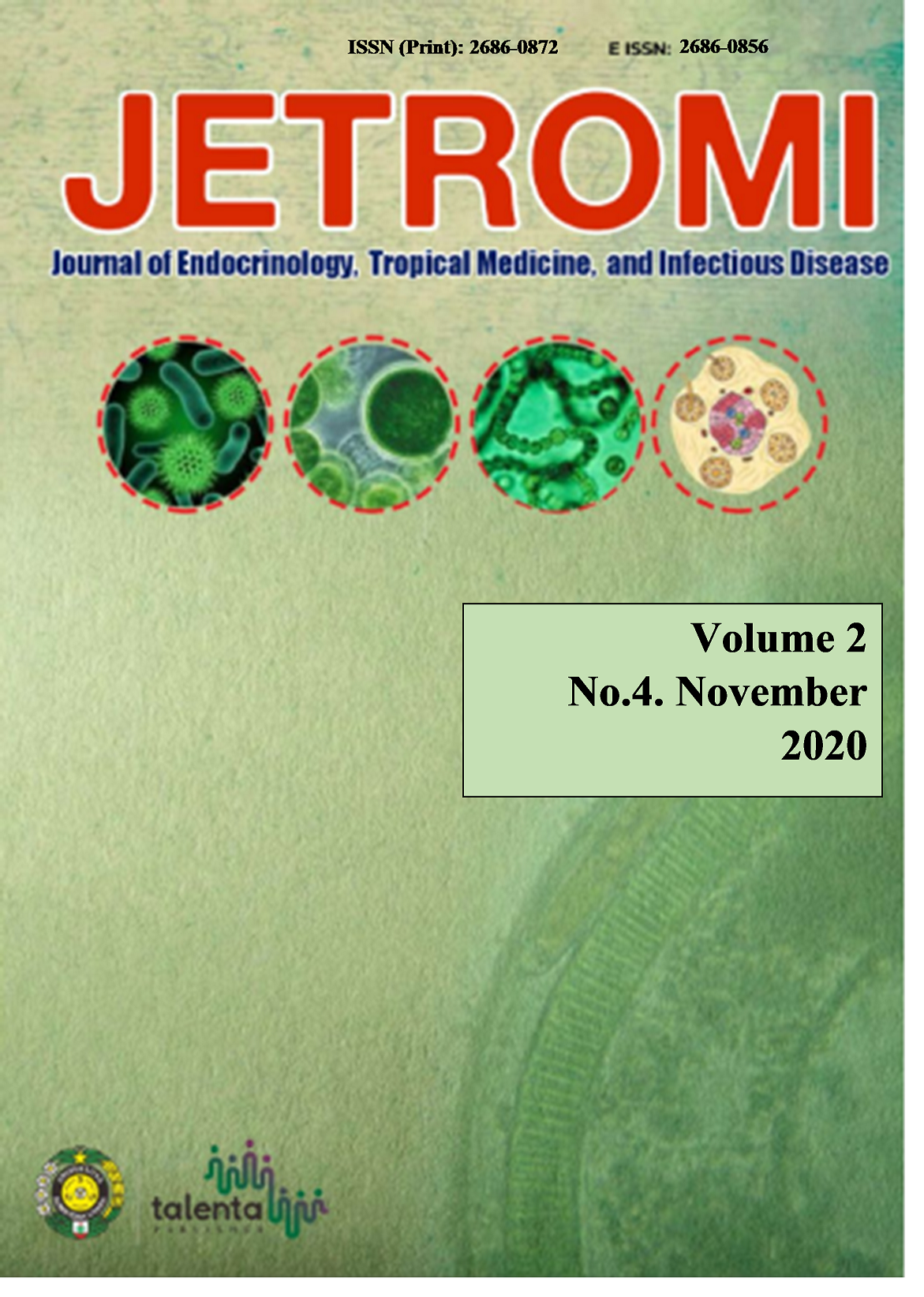Relationship Between Triglycerides And Glucose Index (TyG) And Lipid Profile In Patients With Dyslipidemia Treated With Bay Leaf Extract [Syzygium Polyanthum (Wight) Walp]
DOI:
https://doi.org/10.32734/jetromi.v2i4.4778Keywords:
TyG, Dyslipdemia, Syzygium Polyanthum (Wight) WalpAbstract
Background: Insulin Resistance (IR) causes a metabolic disorder including hyperglycemia, high blood pressure, and dyslipidemia. The purpose of the study was to assess the relationship of Triglycerides and Glucose Index (Tyg) decline relationship with lipid profile after bay leaf extract treatment in dyslipidemia patients. Method: Fifteen dyslipidemia patients were administered 2x200 mg salam leaf extract capsules for 30 days. Criteria dyslipidemia is defined as one of the following: total cholesterol level ≥ 240 mg/dL, triglyceride levels ≥150 mg/dL, LDL cholesterol levels ≥140 mg/dL, HDL cholesterol levels <40 mg/dL, or the use of lipid-lowering drugs. Blood samples lipid profile for biochemical tests were drawn in the morning after fasting 12 h. Anthropometric BMI and waist circumference measures were taken using standard procedures. The TG/HDL-C ratio was calculated by dividing the serum concentration of TG by HDL-C measured in mg/dL. TyG index was calculated based on formula: Ln [TG (mg/dL) x FG (mg/dL). Result: After 30 days of salam leaf extract treatment, there was a significant correlation of TyG reduction with parameters TC, LDL-C, TG, TG/HD ratio (p: 0.025*, p: 0.001*, p: 0.013*, sequentially) Conclusion: There is a significant correlation between Tyg reduction with TC, TG, and TG/HDL, which leads to a decrease in cardiovascular risk in dyslipidemia patients.
Downloads
Downloads
Published
Issue
Section
License
Copyright (c) 2020 Journal of Endocrinology, Tropical Medicine, and Infectiouse Disease (JETROMI)

This work is licensed under a Creative Commons Attribution-NonCommercial-ShareAlike 4.0 International License.
The Authors submitting a manuscript do so on the understanding that if accepted for publication, copyright of the article shall be assigned to Journal of Endocrinology, Tropical Medicine and Infectious Diseases (JETROMI).
Copyright encompasses exclusive rights to reproduce and deliver the article in all form and media. The reproduction of any part of this journal, its storage in databases and its transmission by any form or media, will be allowed only with a written permission from Journal of Endocrinology, Tropical Medicine and Infectious Diseases (JETROMI).








